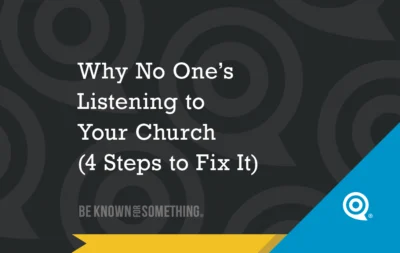
Why No One’s Listening to Your Church (4 Steps to Fix It)
You’re leading. You’re preaching. You’re promoting. But still… it feels like no one’s really listening. That’s not just frustrating; it’s

In times of church crisis, clear and effective communication can make a crucial difference in maintaining trust and ensuring the safety and well-being of your congregation (read reasons why a church needs a Crisis Communication Plan). As a pastor of congregations of all sizes, having an effective crisis communication plan is not just a necessity but a responsibility. Here are five simple steps to help create that crisis communication plan (adapt them to your church):
1. Identify Potential Crises and Create Scenarios
Start by identifying potential crises that could impact your church (e.g., natural disasters, health emergencies, leadership scandals, or security threats). For each potential crisis, consider detailed scenarios outlining possible developments and impacts. Here are practical tips to get started:
2. Establish a Crisis Communication Team
A dedicated crisis communication team ensures that roles are clear and responses are swift and organized. This team should include key church leaders, communication people, and volunteers who can handle various aspects of crisis management. Tips for doing this (adapt to the size of your congregation):
3. Develop a Communication Strategy
Your communication strategy should outline how information will be disseminated during a crisis. This includes deciding on the platforms, channels, and tools you will use to reach your congregation and the broader community (if needed). Tips for doing this:
4. Establish a Timeline for Communication
During a crisis, it’s important to maintain consistent communication with your members. For some scenarios, you’ll want to inform the public too. Establish timelines to ensure that everyone receives accurate and timely information. Tips for doing this (when a crisis happens):
5. Review Your Plan and Conduct Drills
Regularly review your crisis communication plan. For some churches, you should conduct drills to test the plan. These reviews help identify weaknesses and will improve response. It also ensures that your team remains prepared and confident in their roles. Tips for doing this effectively:
By following these five simple steps, pastors can build a robust and effective crisis communication plan for their church. This proactive approach not only protects your congregation but also reinforces trust and unity within your church community. It’s truly for peace of mind as you pray for your church to never have to use your plan.


You’re leading. You’re preaching. You’re promoting. But still… it feels like no one’s really listening. That’s not just frustrating; it’s

Julie Andrews sang it well in The Sound of Music: “Let’s start at the very beginning, a very good place

Excuse me, but who are you? Few questions strike deeper than this one: “Who are you?” It can feel affirming
We'll never spam you. Unsubscribe anytime.
